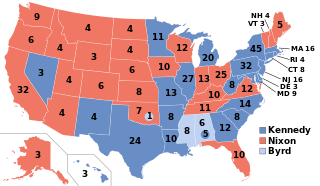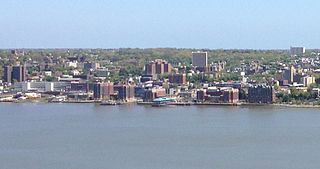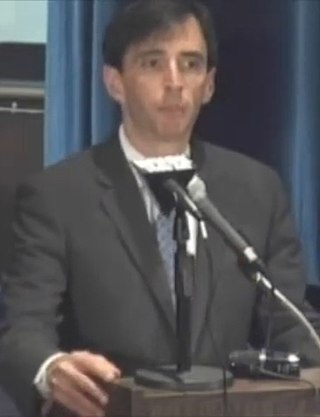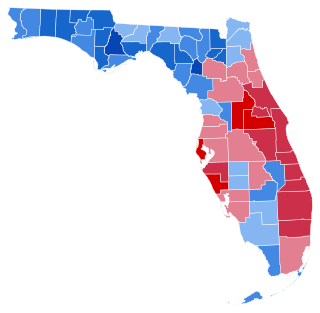Related Research Articles

The 1952 United States presidential election was the 42nd quadrennial presidential election and was held on Tuesday, November 4, 1952. Republican Dwight D. Eisenhower won a landslide victory over Democrat Adlai Stevenson II, becoming the first Republican president in 20 years.

The 1956 United States presidential election was the 43rd quadrennial presidential election. It was held on Tuesday, November 6, 1956. President Dwight D. Eisenhower successfully ran for reelection against Adlai Stevenson II, the former Illinois governor whom he had defeated four years earlier. This election saw the sixth and most recent rematch in presidential history, and the second where the winner was the same both times. This was the last election before the term limits established by the 22nd Amendment came into effect.

The 1960 United States presidential election was the 44th quadrennial presidential election. It was held on Tuesday, November 8, 1960. In a closely contested election, Democratic Senator John F. Kennedy defeated the incumbent Vice President Richard Nixon, the Republican nominee. This was the first election in which 50 states participated, marking the first participation of Alaska and Hawaii, and the last in which the District of Columbia did not. This made it the only presidential election where the threshold for victory was 269 electoral votes. It was also the first election in which an incumbent president was ineligible to run for a third term because of the term limits established by the 22nd Amendment.

Yonkers is a city in Westchester County, New York, and a suburb of New York City. Developed along the Hudson River, it is the third most populous city, after New York City and Buffalo, and ninth most-populous municipality in the state of New York. The population of Yonkers was 211,569 as enumerated in the 2020 United States Census. It is classified as an inner suburb of New York City, located directly to the north of the Bronx and approximately 2.4 miles (4 km) north of Marble Hill, Manhattan, the northernmost point in Manhattan.

In American politics, the Southern strategy was a Republican Party electoral strategy to increase political support among white voters in the South by appealing to racism against African Americans. As the civil rights movement and dismantling of Jim Crow laws in the 1950s and 1960s visibly deepened existing racial tensions in much of the Southern United States, Republican politicians such as presidential candidate Richard Nixon and Senator Barry Goldwater developed strategies that successfully contributed to the political realignment of many white, conservative voters in the South who had traditionally supported the Democratic Party. It also helped to push the Republican Party much more to the right relative to the 1950s. By winning all of the south a presidential candidate could obtain the presidency with minimal support elsewhere.

Getty Square is the name for downtown Yonkers, New York, centered on the public square. Getty Square is the civic center, central business district, and transit hub of the City of Yonkers. A dense and growing residential area, it is located in southern Westchester County, New York. The square is named after prominent 19th-century merchant Robert Getty.

New York's 16th congressional district is a congressional district for the United States House of Representatives represented by Jamaal Bowman.
Nicholas A. Spano is a lobbyist and Republican politician from New York. He served in the New York State Assembly and New York Senate.
The West Bronx is a region in the New York City borough of the Bronx. The region lies west of the Bronx River and roughly corresponds to the western half of the borough.

The Yonkers Public Library in Yonkers, New York, consists of three branch libraries. The main branch is the 'Yonkers Riverfront Library' which overlooks the Hudson River and New Jersey Palisades. Yonkers Riverfront Library is located in one of the former Otis Elevator buildings and it is across the street from the Yonkers train station. The new main library was opened in 2002, contains an area of 200,000 square feet (19,000 m2) and 4 stories.

Noam Bramson is an American politician from the state of New York. He is the mayor of New Rochelle, New York, and has served since being appointed in January 2006 to complete the unexpired term of Mayor Timothy C. Idoni. Bramson was reelected in 2011 with 79% of the vote.

The 1956 United States presidential election in New York took place on November 6, 1956. All contemporary 48 states were part of the 1956 United States presidential election. Voters chose 45 electors to the Electoral College, which selected the president and vice president.

The 1952 United States presidential election in Virginia took place on November 4, 1952. Voters chose twelve representatives, or electors to the Electoral College, who voted for president and vice president.

Show Me a Hero is a 2015 American miniseries based on the 1999 nonfiction book of the same name by former New York Times writer Lisa Belkin about Yonkers mayor (1987–89) Nick Wasicsko. Like the book, the miniseries details a white middle-class neighborhood's resistance to a federally mandated scattered-site public housing development in Yonkers, New York, and how the tension of the situation affected the city as a whole.

Brick by Brick: A Civil Rights Story is a 2007 documentary film, produced and directed by Bill Kavanagh. The story follows three Yonkers, New York families from the 1970s to the 1990s as they navigated a protracted and bitter confrontation in the city over housing and school desegregation. The documentary also recounts the heroic efforts of grassroots activists to keep the battle alive to address racial isolation and housing discrimination in Yonkers, as well as the infamous 1988 confrontation between the Federal courts and the City of Yonkers over the city's contempt of court orders. Westchester County civil rights activist Winston Ross is among those portrayed in the film, which details his youth in Yonkers' Runyon Heights neighborhood and his years in the city's public schools.

The 1952 United States presidential election in Florida took place on November 4, 1952, as part of the 1952 United States presidential election. Florida voters chose ten representatives, or electors, to the Electoral College, who voted for president and vice president.

The 1956 United States presidential election in North Carolina took place on November 6, 1956, as part of the 1956 United States presidential election. North Carolina voters chose 14 representatives, or electors, to the Electoral College, who voted for president and vice president.

The 1956 United States presidential election in Alabama took place on November 6, 1956, as part of the 1956 United States presidential election. Alabama voters chose eleven representatives, or electors, to the Electoral College, who voted for president and vice president. In Alabama, voters voted for electors individually instead of as a slate, as in the other states.

The 1956 United States presidential election in Tennessee took place on November 6, 1956, as part of the 1956 United States presidential election. Tennessee voters chose eleven representatives, or electors, to the Electoral College, who voted for president and vice president.

The 1952 United States presidential election in North Carolina took place on November 4, 1952, as part of the 1952 United States presidential election. North Carolina voters chose 14 representatives, or electors, to the Electoral College, who voted for president and vice president.
References
- ↑ Brenner, Elsa (November 17, 2002). "If You're Thinking of Living In/Runyon Heights, Yonkers; 'Dead End' Signs Recall a Bitter Legacy". The New York Times. Retrieved April 7, 2021.
- ↑ Brenner, Elsa. "If You're Thinking of Living In/Runyon Heights, Yonkers; 'Dead End' Signs Recall a Bitter Legacy". The New York Times. The New York Times.
- ↑ Haynes, Bruce. Red Lines, Black Spaces: The Politics of Race and Space in a Black Middle-Class Suburb. Yale University Press. p. 132.
- ↑ Haynes, Bruce. Red Lines, Black Spaces: The Politics of Race and Space in a Black Middle-Class Suburb. Yale University Press. p. 135.